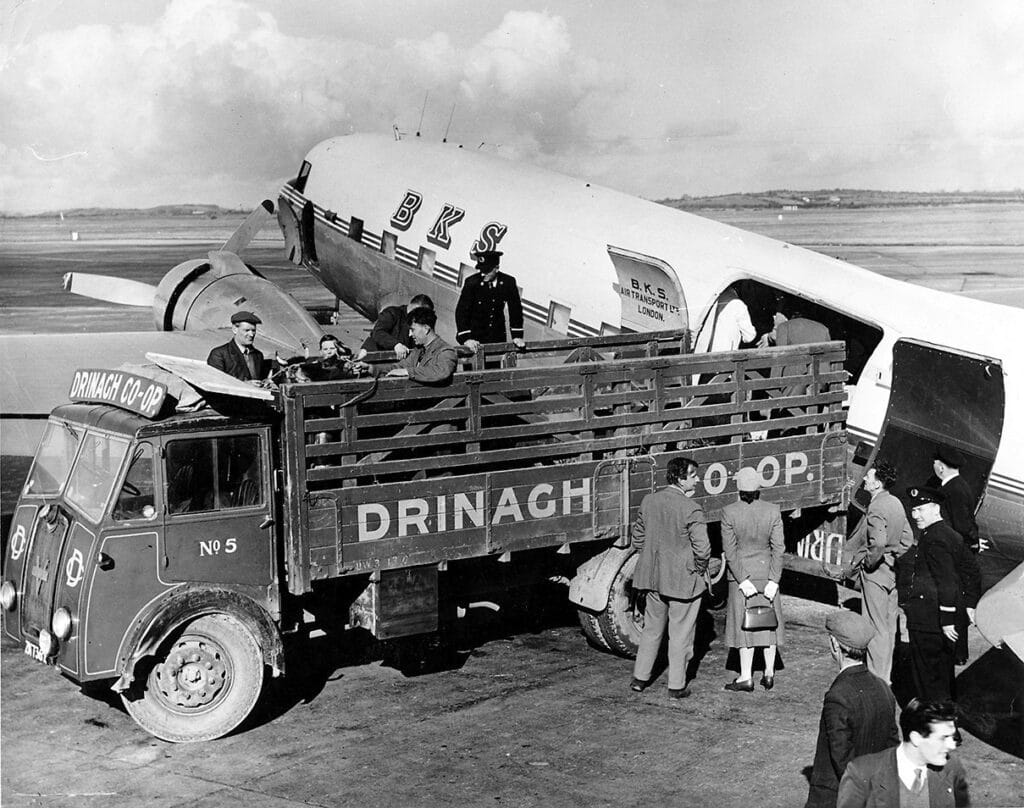
The feast of St. Michael the Archangel falls on September 29. In the old Irish tradition, Michaelmas was known as ‘Fómhar na nGéanna’ – the goose harvest. Geese, hatched out in spring, were left outside all through the summer in what can only be called truly free range and organic! When the grain was harvested, they were left into the stubble fields, feeding on the remaining grains, until Michaelmas when they were ready for market. Eating goose on Michaelmas day was a custom in many parts of the country.
Many farmers’ wives had large flocks of geese and chickens, and later, turkeys. The care and disposal of fowl was the women’s business and often they made presents of geese to friends and also to poor families. Some of the geese were kept for the Christmas market and for the family’s Christmas dinner. (Goose was the usual meat eaten on Christmas Day before the turkey became popular).
At Michaelmas bigger farmers killed an animal and gave portions of meat to the poor. Geoffrey Keating, in his ‘History of Ireland’, wrote: ‘the custom of killing St. Michael’s sheep was called in the Irish language ‘Cuid Mhichil’ (Michael’s share). Often around the end of September and early October there is a period of fine weather, known in Irish as ‘Samhradh beag na féile Mhichíl’ (the little summer of Michaelmas). In parts of Ulster it was the custom to present the landlord with a couple of geese at Michaelmas. There was an old saying: ‘if you eat goose at Michaelmas you will never want all the year round’.
In parts of the west and south-west coast Michaelmas marked the end of the fishing season; fishing boats were securely moored and fishing gear (nets, lines, pots and so on) were stored away. Small boats were hauled up above the high water mark in a sheltered place. On the Irish-speaking island of Cape Clear the old fisherman had a saying ‘Téann an púca sa bhfarraige Lá ‘le Mhicíl (The pooka – fairy – goes into the sea on St. Michael’s Day). In other words the weather couldn’t be trusted after that day. However, fishing continued up to Christmas if the weather was suitable.
According to country recipes, the secret of a succulent goose was in the long, slow cooking. In the traditional farmhouse kitchen the goose was cooked in a heavy iron pot with a lid. The pot was placed on the open hearth and the lid was covered with sods of turf, which were replaced from time to time. The goose was stuffed with potatoes, onions, celery, butter, chopped lean bacon and seasoning. Boiled goose provided good broth, though it was said that ‘a boiled goose was a spoiled goose’.
Goose feathers and down were used for filling mattresses and pillows. In many parts of the country the farmer roasted geese for the harvest feast for his workers and the first of the corn was made into flour and baked into bread. The last sheaf of corn took pride of place on the supper table and the girl who had tied it was led by the farmer’s son out on the floor in the first dance of the night.
In east Munster and south Leinster, where many farms had orchards, Michaelmas was considered the proper time for picking the apples and making cider which formerly was a popular home-brew in those areas. A favourite saying there was ‘Lá Fhéile Mhicíl a chroitear an t-úllórd’ – on St. Michael’s Day the orchard is shaken – meaning the apples were picked.
At Tramore, Co. Waterford, the summer holiday season was closed at Michaelmas with a curious ceremony. The custom of ‘going to the sea’ was practised for a long time there. Merchants from the towns, as well as farming families, had been going to Tramore for more than two hundred years with the result that many local people derived much of their livelihood from this practice; lodging-house keepers, owners of bathing machines, sellers of fish, periwinkles, cockles and other marine delicacies, pub owners and shopkeepers. On the feast of St. Michael, these people marched in a body to the edge of the sea and threw in an effigy of St Michael, as a jocose hint that his festival meant financial loss to them until the following year.
There was a widespread tradition concerning blackberries, which held that after a certain date each year, the devil ruins them by spitting on them. The date varies but was often Michaelmas or Hallowe’en. There were some other beliefs connected with Michaelmas; it was widely believed that horses, cats and babies are often not well when the blackberries are ripe.
St. Michael the Archangel, being the patron saint of high places, has given his name to high rocks or hills. The best known in Ireland is Sceilg Mhichíl (The Skelligs). There are many places named Mount St. Michael, such as the Mercy Convent in Rosscarbery, Co. Cork.



